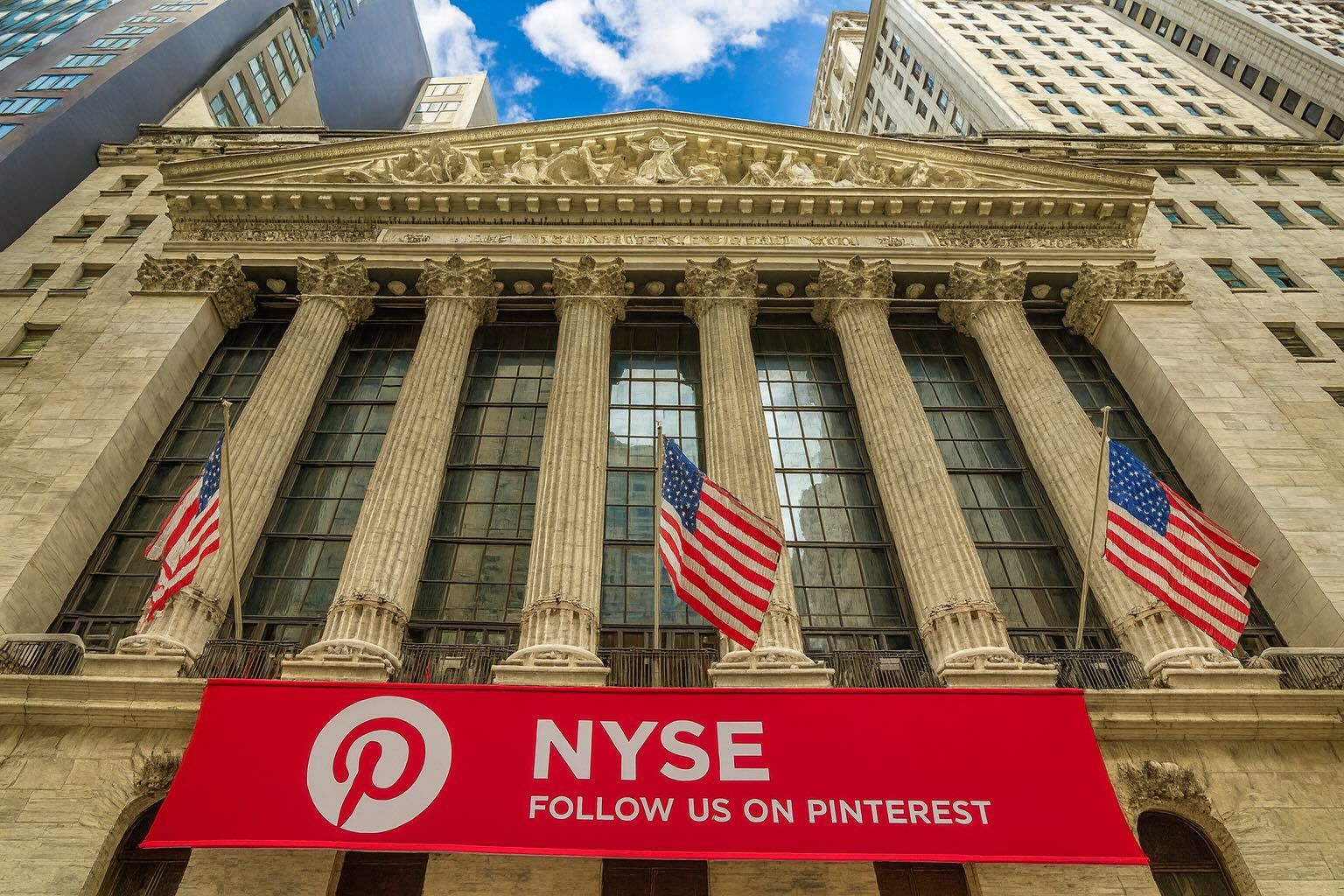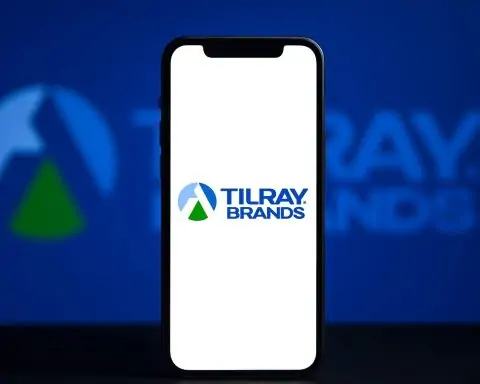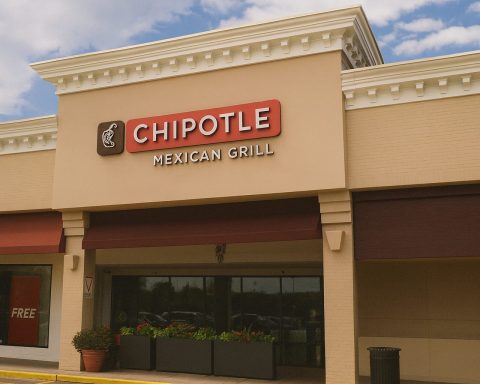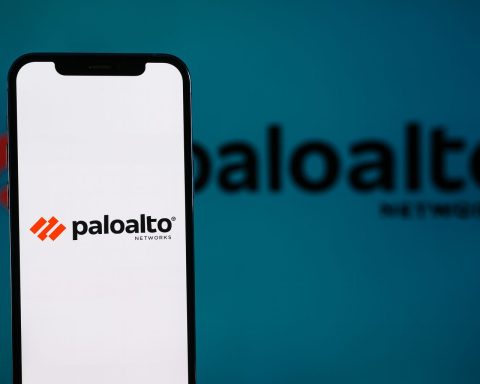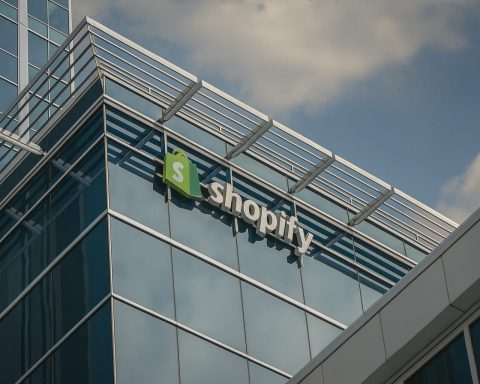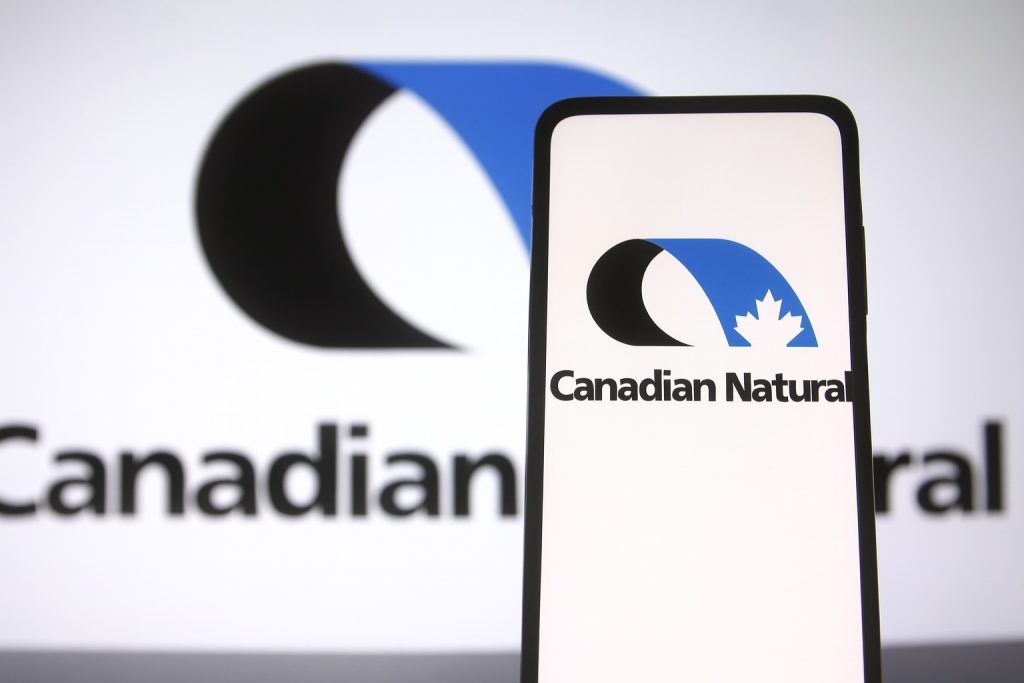- Q2’25 Highlights: $998M revenue (+17% YoY) and 578M monthly users (+11%) [1]; Gen Z now >50% of users [2].
- Ad-Driven Platform: Visual “discovery” social network (500M+ MAUs) monetizing via ads (Promoted Pins, video/shopping ads) [3] [4]. Focus on AI-powered shopping (e.g. new “Top of Search” ads).
- New Products & Partnerships: September’s “Pinterest Presents” unveiled AI ad tools (Top-of-Search beta, expanded Shopping Ads, Media Network Connect) [5] [6]. Collaborations with Instacart and Kroger make Pins more shoppable [7] [8].
- Executive Moves: Instacart CFO Emily Reuter joined Pinterest’s board (Sep 2025) to bolster its “AI-powered shopping” strategy [9]. CEO Bill Ready was elected to Visa’s board (Sep 2025) [10].
- Stock Snapshot: As of Oct 10, 2025, PINS trades around $30.40 [11] (52-week range ~$23.7–40.9) – roughly flat YTD. Analyst consensus price target is ~$43–44 (∼35% upside) [12]; UBS just raised its PT to $51 (Buy) [13].
Overview – Company & Business Model
Pinterest, Inc. (NYSE:PINS) is a visual search and discovery platform launched in 2010 [14]. Users (“pinners”) browse and save image-based “Pins” on topics from fashion and home decor to recipes and travel, often linking to products or content. The site’s tagline – “where people discover new ideas, plan and shop” – reflects its e-commerce focus. Pinterest has over half a billion MAUs globally (578M in Q2’25) [15]; two-thirds of users are women, and more than 50% now are Gen Z [16]. Crucially, Pinterest is free to users and monetizes almost exclusively through ads. Advertisers buy Promoted Pins, search ads, shopping and video ads targeted to Pinterest’s highly engaged audience. As one analysis notes, Pinterest’s “primary revenue source is advertising, including Promoted Pins and Shopping Ads” [17]. The company leverages AI and personalization to match products to users’ intent (its new “Performance+” ad platform does automated bidding/optimization). Pinterest also integrates shopping tools (product tags, catalogs, checkout features) and affiliate links so users can purchase directly from Pins, blending inspiration with e-commerce.
Recent News & Developments (Early Oct 2025)
- Earnings Update & Guidance: On Aug 8, Pinterest reported Q2’25 results: $998M revenue (+17% YoY) and 578M MAUs (+11% YoY) [18]. Adjusted EBITDA jumped 33% to about $249M (25% margin) [19]. The company beat revenue expectations and reiterated growth, citing international gains (Europe ARPU +26%, rest-of-world +44% [20]). CEO Bill Ready praised the quarter: “Gen Z has grown to over half of our user base” [21] and noted AI-driven ad tools ramping up. For Q3, management guided revenue of $1.033–$1.053 billion (15–17% YoY growth) [22], essentially meeting the ~16% consensus. This solid forecast – after earlier optimism on AI – is fueling analyst upgrades.
- Ads & Product Launches: In late September, Pinterest’s annual Pinterest Presents marketing summit unveiled new ad products aimed at monetizing Gen Z shoppers. The company rolled out a “Top of Search” ad beta (visual, desktop-first format) and expanded Local Inventory Ads (driving store visits) [23] [24]. It also launched Pinterest Media Network Connect, which lets retailers connect their media-buying to Pinterest’s platform – already used by Kroger Precision Marketing and Instacart teams [25] [26]. Marketing analysts note these moves emphasize shopping: 39% of Gen Z prefer starting their shopping on Pinterest, and early tests show higher CTRs (Top of Search gave +29% CTR vs. standard campaigns) [27]. Additionally, Pinterest is rolling out tools to label or limit AI-generated images in the feed, responding to user concerns [28].
- Executive Changes: Pinterest has made key leadership additions recently. In mid-Sept 2025, longtime Instacart CFO Emily Reuter was elected to Pinterest’s board (Class I, Audit Committee) to leverage her retail/e-commerce expertise [29]. Her hire fits Pinterest’s “AI-enabled shopping assistant” strategy. Also, on Sept 29 Bill Ready (CEO of Pinterest) joined the board of Visa [30] – a move highlighting his fintech/ad-tech background and strengthening merchant-advertiser ties. Conversely, veteran board member Jeremy Levine retired on Sept 18 [31]. These changes come as Pinterest pushes global e-commerce partnerships (e.g. a July 2025 tie-up with agency Ecommerce Equation to train retailers for holiday selling) and faces regulatory scrutiny (e.g. a Russian court fined Pinterest ~$124K in Aug’25 for local compliance [32], and a European privacy complaint over tracking remains unresolved).
Stock Price & Performance (Oct 2025)
Pinterest’s stock trades on NYSE under “PINS.” On Oct 10, 2025, it closed at $30.40 [33]. This is near the midpoint of its 52-week range ($23.68–$40.90) [34]. The stock has been volatile: after reaching ~high-$30s in September (pre-summit/earnings), it pulled back in early Oct. For example, it slipped ~5% over the past week (Oct 6–10: opened $32.05, closed $30.40) [35]. This late-September peak coincided with record highs in the broader market (S&P/Nasdaq) just before a global sell-off. On Oct 10, the Nasdaq tumbled ~3.5% [36], dragging tech stocks lower – PINS included (Oct 10: -4.6% [37]). Year-to-date, PINS is modestly up (roughly +4–5% in 2025), underperforming the large-cap tech rally. Trading volumes have been elevated; short interest is relatively low (~4.4% of float, ~29.7M shares short [38]), suggesting only moderate bearish bets. Current valuation metrics are attractive: as of Oct 2, P/E (TTM) was ~11.6x and forward P/E ~18.2x (compared to internet sector ~29.7x) [39]. The PEG ratio is ~0.54 [40] – indicating analysts expect strong growth relative to price. Pinterest also carries essentially no debt (enterprise value ~$19.2B vs. market cap ~$21.7B [41], implying ~$2.5B net cash). Its yield (~0.5%) is near zero, as it has not paid dividends.
Analyst Commentary & Forecasts
Wall Street’s tone on PINS is generally bullish. In the past month, multiple firms initiated or raised ratings. For instance, Mizuho (Sept 30) initiated with an Outperform at $50 target, and UBS (Oct 9) maintained a Buy, raising its PT from $50 to $51 [42]. Citi, Wedbush and Stifel also lifted targets in Aug (to $50, $44, $47, respectively) [43]. These consistently higher targets reflect confidence in Pinterest’s growth. The current consensus 12-month price target is $43.6 (high $51) [44] – ~43% above today’s price. By brokerage count, the average rating is about 1.9 (“Outperform”) on a 1–5 scale [45]. JPMorgan recently upgraded PINS to Overweight at a $40 PT (citing better user engagement), and Wedbush reiterated its bullish stance with a $44 PT (prior $42). MarketBeat notes that 34 analysts rate PINS Buy, 6 Hold, 1 Sell [46].
Analysts praise Pinterest’s AI focus and Gen-Z traction. In mid-2025, Pinterest was highlighted as a “Gen Z winner” for its mobile-first shopping features. As eMarketer reported, Q2 results exceeded guidance, and international expansion improved ARPU sharply [47]. However, some caution remains: eMarketer’s Jeremy Goldman warned that in a “high-expectation environment, even a small gap” in results can provoke a sell-off [48]. Lenny Zephirin (Zephirin Group) noted user growth may be nearing saturation (“MAUs are approaching a ceiling… despite incremental implementation of AI” [49]), implying Pinterest must retain its growth drivers. Barron’s and fintech analysts have remarked that continued expansion in shopping and AI tools could ignite further gains. Consensus estimates see Pinterest growing 2025 revenue ~15-17% to about $4.22B (EPS ~$1.72) [50], with roughly ~$1.05B revenue (up ~16.6%) and $0.42 EPS for Q3 [51]. Notably, the stock’s PEG ~0.5 suggests the market currently underestimates its projected growth.
Fundamental & Technical Analysis
Fundamentals: Pinterest’s growth metrics are solid. Revenue has climbed ~15–17% YoY in 2025 so far [52], and adjusted EBITDA has grown faster (33% in Q2). Profitability is improving: Q2 non-GAAP net income was $197M (GAAP loss was $30M due to stock comp) [53], and net margins and cash flow have turned positive after losses in prior years. The company ended Q2 with nearly $2.7B in cash (vs. little debt) [54], enabling reinvestment in AI and shopping features. Its P/E and price/sales (~5.3x) [55] are below tech peers thanks to high earnings growth. Long-term (DCF) fair-value estimates (GuruFocus) are ~$44–47 [56], implying ~40% upside.
Technicals: By most indicators, PINS is in a short-term downtrend. According to TipRanks, the stock currently trades below key moving averages (20-day EMA $33.34, 50-day EMA $34.57, 200-day SMA $33.32), which all signal “Sell” [57]. Momentum slowed in late Sept, and Oct’s market swoon pushed PINS through support levels. Its RSI stands around 32–33 [58] – near neutral (not deeply oversold, but low), suggesting limited immediate downside but weak bullish momentum. MACD is slightly negative (-1.19) [59], which TipRanks interprets as a modest buy signal (bullish momentum building), but most moving averages currently yield a “Sell” consensus [60]. In short, near-term technical bias is bearish due to general market weakness, though an oversold bounce could occur if tech stocks rally. Analysts note that a “sell-the-news” effect hit PINS after Q2 (like many high-growth names) [61]. Key support to watch is the $30 level; a break below could target the 52-week low ~23.7, while a sustained move back above ~$34 could resume the broader uptrend.
Competitive Landscape
Pinterest competes in the crowded social commerce space. Its main rivals include Meta Platforms (Facebook/Instagram), Snap Inc., and rapidly growing TikTok (ByteDance), as well as indirect competition from search/e-tail (Google, Amazon). Meta dwarfs Pinterest in scale (Meta’s ad sales remain multiple times larger), but Pinterest occupies a niche of discovery and high-intent shopping, especially in home, fashion, and recipes. Snap has a similar user demographic (young, mobile-first) and reported $1.30B Q2 rev (+9% YoY) [62], but it faces stagnation in its core U.S. audience (North American DAUs down) [63]. Snapchat’s revenues are heavily US-centric (where growth stalled), mirroring one of Pinterest’s challenges — dependence on NA ad spend versus tougher international ARPU. TikTok, while private, is widely cited as a top platform for reaching Gen Z; its ad platform is less mature but growing fast. Marketers often rank TikTok alongside Pinterest for e-commerce reach (some agencies list TikTok, Instagram and Pinterest as the “top three” for shopping ads). According to one marketer survey, Facebook/IG, TikTok, and Pinterest were all rated best for direct e-commerce results, albeit Pinterest performs best in certain niches (DIY, home, etc.) [64]. Overall, Pinterest’s edge is its unique “visual search” model and heavy female bias, which advertisers find valuable for specific categories. However, competition is stiff: Meta and TikTok compete fiercely for ad dollars, and Amazon continues to build its own social-ad tools. Analysts note that if macro ad budgets tighten (as seen with some platform-specific ad spend slowdowns), Pinterest could feel pressure like Snap did in Q2.
Investor Sentiment & Risks
Investor sentiment on PINS is a mix of enthusiasm and caution. Bullish factors include the company’s strong AI/GenZ narrative and insider-positive signals (Board appointments, upbeat CEO commentary). The recent analyst upgrades and target raises (to $44–51) reflect expectations of sustained double-digit growth. Some institutional holders (e.g. Janney Scott boosted its stake in Q2) have shown confidence. On the other hand, the broader market sell-off (Oct 10 trade-war rout [65]) weighed on sentiment. The VIX “fear index” spiked to ~21.7 on Oct 10 [66], indicating elevated volatility that can hurt growth stocks. Investor attention also hones in on potential risks:
- Growth Plateau: As Pinterest matures, accelerating user growth may be hard. Analysts warn MAUs could be nearing a cap [67]. If user growth slows, Pinterest must rely more on ARPU gains (ads per user) and new features – which introduces execution risk.
- Ad Market Cyclicality: Pinterest’s fate is tied to ad spending trends. A market-wide budget pullback (as seen in smaller platforms after Q2 due to the end of EU de minimis exemptions [68]) could pressure revenue. Rising interest rates also raise the discount rate on high-growth tech valuations.
- Competition: Larger rivals with more diversified platforms could poach ad dollars. If TikTok’s commerce features or Meta’s shops become more effective, advertisers might shift spend away.
- Regulatory/Content Risk: Pinterest faces general scrutiny on privacy (GDPR/DSA compliance) and content. A European privacy complaint (noyb) and the earlier “mass ban” controversy (users upset by a swath of account closures) could impact reputation. While not major financial drains yet, any stiff regulatory fines or policy changes could add uncertainty.
- Technical Risk: The stock’s current technical weakness suggests some traders are inclined to sell rallies. If PINS breaches $30 on renewed tech weakness, it could trigger stops. Additionally, options sentiment (68% chance trading between $29.5-$38.6 by Oct 31 [69]) shows a wide expected range, highlighting uncertainty.
In summary, Pinterest’s stock outlook is supported by solid fundamentals (strong growth, improving profitability, robust balance sheet) and a positive analyst consensus. Its market niche (Gen Z e-commerce) and AI-driven ad tools give it a clear growth narrative. However, investors must weigh near-term headwinds: broad tech volatility, competitive pressures, and execution of new initiatives. The combination of a modest stock base and upbeat forecasts means PINS could rise sharply if execution goes well, but it has already come a long way – so “sell-the-news” jostling is a real factor.
Sources: Recent earnings reports and analyst write-ups [70] [71]; business updates from Pinterest’s site and TechCrunch [72] [73]; Reuters and eMarketer summaries [74] [75]; technical/stock data from Investing.com and TipRanks [76] [77]; analyst forecasts from GuruFocus and Investing.com [78] [79]; and relevant TS2.Tech market commentary [80] [81]. Each charted or quoted figure is cited above.
References
1. investor.pinterestinc.com, 2. investor.pinterestinc.com, 3. investor.pinterestinc.com, 4. iide.co, 5. www.marketingdive.com, 6. influencermarketinghub.com, 7. www.marketingdive.com, 8. influencermarketinghub.com, 9. investor.pinterestinc.com, 10. www.marketscreener.com, 11. www.investing.com, 12. www.gurufocus.com, 13. www.gurufocus.com, 14. investor.pinterestinc.com, 15. investor.pinterestinc.com, 16. investor.pinterestinc.com, 17. iide.co, 18. investor.pinterestinc.com, 19. www.emarketer.com, 20. www.emarketer.com, 21. investor.pinterestinc.com, 22. investor.pinterestinc.com, 23. www.marketingdive.com, 24. influencermarketinghub.com, 25. www.marketingdive.com, 26. influencermarketinghub.com, 27. influencermarketinghub.com, 28. techcrunch.com, 29. investor.pinterestinc.com, 30. www.marketscreener.com, 31. www.marketscreener.com, 32. www.reuters.com, 33. www.investing.com, 34. www.investing.com, 35. www.investing.com, 36. ts2.tech, 37. www.investing.com, 38. www.marketbeat.com, 39. finviz.com, 40. finviz.com, 41. www.investing.com, 42. www.gurufocus.com, 43. www.gurufocus.com, 44. www.investing.com, 45. www.gurufocus.com, 46. www.investing.com, 47. www.emarketer.com, 48. www.reuters.com, 49. www.reuters.com, 50. finviz.com, 51. finviz.com, 52. investor.pinterestinc.com, 53. investor.pinterestinc.com, 54. www.marketbeat.com, 55. www.investing.com, 56. www.gurufocus.com, 57. www.tipranks.com, 58. www.tipranks.com, 59. www.tipranks.com, 60. www.tipranks.com, 61. www.reuters.com, 62. www.socialmediatoday.com, 63. www.socialmediatoday.com, 64. strikedigital.ie, 65. ts2.tech, 66. ts2.tech, 67. www.reuters.com, 68. www.reuters.com, 69. quantcha.com, 70. investor.pinterestinc.com, 71. www.emarketer.com, 72. www.marketingdive.com, 73. investor.pinterestinc.com, 74. www.reuters.com, 75. www.emarketer.com, 76. www.investing.com, 77. www.tipranks.com, 78. www.gurufocus.com, 79. www.investing.com, 80. ts2.tech, 81. ts2.tech
